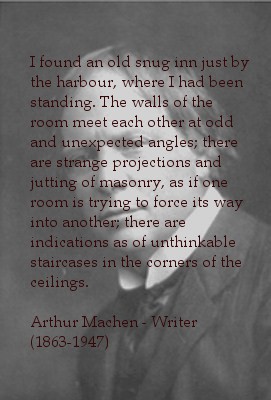JRR Tolkien made two visit to the town of Whitby in his lifetime, the first was in the summer of 1910 as an 18 year old student of King Edward’s School in Birmingham.
Always a keen artist it was whilst holidaying in the town that he sketched ‘The Ruins Of The West End Of The Abbey’, a picture that hints at his broadening artistic ability; a skill which would eventually be used to great effect in illustrating his books The Hobbit and The Lord Of The Rings.
His second visit appears to be in the early part of 1955, and judging by a correspondence sent from Oxford to a Mrs Turnbull of Whitby he was on the cusp of a momentous occasion.
In the letter Tolkien thanks Mrs Turnbull for her ‘munificent and magnificent gift’ (apparently champagne), he then apologies for his tardy response - the gift having only arrived two days before, and finally goes on to discuss the cause for his celebrations - clearing his desk of The Return Of The King:-
'Though sending off the last items (with a marginal comment 'and at last') for Vol III might have seemed a suitable occasion for the withdrawing of at least one cork, I have so far refrained; but when I drink I shall remember with a gratitude at least as warm and deep as Old Rory felt for the bottles of Old Winyards. I can only hope Vol III will be up to it!'
Although only speculation on my part it would be nice to think that the town of Whitby and the ancient landscape that surrounds it may have - to a very small degree - helped to shape two of the greatest works of fiction ever imagined.
Post by Richard Locker











